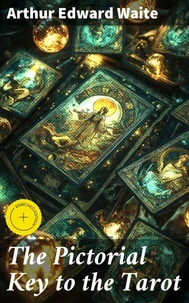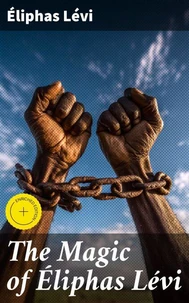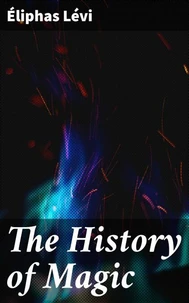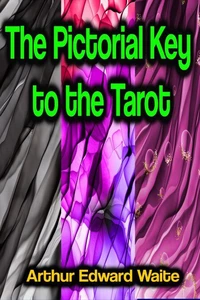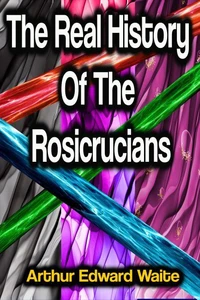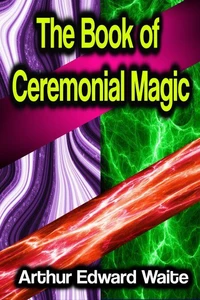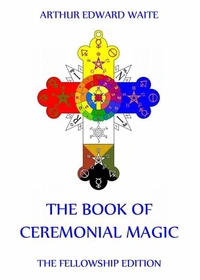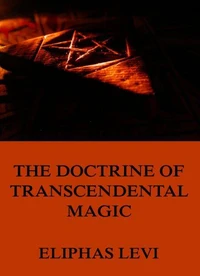The Pictorial Key to the Tarot
Par :Formats :
Disponible dans votre compte client Decitre ou Furet du Nord dès validation de votre commande. Le format ePub est :
- Compatible avec une lecture sur My Vivlio (smartphone, tablette, ordinateur)
- Compatible avec une lecture sur liseuses Vivlio
- Pour les liseuses autres que Vivlio, vous devez utiliser le logiciel Adobe Digital Edition. Non compatible avec la lecture sur les liseuses Kindle, Remarkable et Sony
 , qui est-ce ?
, qui est-ce ?Notre partenaire de plateforme de lecture numérique où vous retrouverez l'ensemble de vos ebooks gratuitement
Pour en savoir plus sur nos ebooks, consultez notre aide en ligne ici
- Nombre de pages340
- FormatePub
- ISBN859-65--4773115-3
- EAN8596547731153
- Date de parution23/11/2023
- Protection num.Digital Watermarking
- Taille3 Mo
- Infos supplémentairesepub
- ÉditeurDIGICAT
Résumé
In "The Pictorial Key to the Tarot, " Arthur Edward Waite deftly combines intricate symbolism with a comprehensive exploration of the Tarot's mystical dimensions. This seminal work features detailed illustrations of the Tarot cards, serving not only as a practical guide through their meanings but also as an invitation to delve into the rich tapestry of esoteric traditions. Waite employs a didactic yet engaging literary style, weaving in historical context, mythology, and psychological insights that align Tarot with practices like divination and personal introspection.
The book is a cornerstone of Tarot literature, bridging the gap between ancient wisdom and contemporary interest in spiritual practices. Waite, a prominent figure in the early 20th-century occult revival, was steeped in mysticism, Kabbalistic thought, and Hermetic philosophy. As a member of the Golden Dawn, a secret society dedicated to esoteric studies, Waite sought to demystify the Tarot and render its profound teachings accessible to a broader audience.
His deeply personal engagement with the cards reveals both his reverence for their historical roots and his desire to inspire a new understanding of their relevance in modern spirituality. This book is highly recommended for anyone interested in Tarot, whether you are a novice seeking to understand the basics or a seasoned practitioner eager to deepen your expertise. Waite's interpretations and insights provide a thorough grounding in the symbolic language of the Tarot, making it an essential addition to the library of scholars, mystics, and spiritual explorers alike.
The book is a cornerstone of Tarot literature, bridging the gap between ancient wisdom and contemporary interest in spiritual practices. Waite, a prominent figure in the early 20th-century occult revival, was steeped in mysticism, Kabbalistic thought, and Hermetic philosophy. As a member of the Golden Dawn, a secret society dedicated to esoteric studies, Waite sought to demystify the Tarot and render its profound teachings accessible to a broader audience.
His deeply personal engagement with the cards reveals both his reverence for their historical roots and his desire to inspire a new understanding of their relevance in modern spirituality. This book is highly recommended for anyone interested in Tarot, whether you are a novice seeking to understand the basics or a seasoned practitioner eager to deepen your expertise. Waite's interpretations and insights provide a thorough grounding in the symbolic language of the Tarot, making it an essential addition to the library of scholars, mystics, and spiritual explorers alike.
In "The Pictorial Key to the Tarot, " Arthur Edward Waite deftly combines intricate symbolism with a comprehensive exploration of the Tarot's mystical dimensions. This seminal work features detailed illustrations of the Tarot cards, serving not only as a practical guide through their meanings but also as an invitation to delve into the rich tapestry of esoteric traditions. Waite employs a didactic yet engaging literary style, weaving in historical context, mythology, and psychological insights that align Tarot with practices like divination and personal introspection.
The book is a cornerstone of Tarot literature, bridging the gap between ancient wisdom and contemporary interest in spiritual practices. Waite, a prominent figure in the early 20th-century occult revival, was steeped in mysticism, Kabbalistic thought, and Hermetic philosophy. As a member of the Golden Dawn, a secret society dedicated to esoteric studies, Waite sought to demystify the Tarot and render its profound teachings accessible to a broader audience.
His deeply personal engagement with the cards reveals both his reverence for their historical roots and his desire to inspire a new understanding of their relevance in modern spirituality. This book is highly recommended for anyone interested in Tarot, whether you are a novice seeking to understand the basics or a seasoned practitioner eager to deepen your expertise. Waite's interpretations and insights provide a thorough grounding in the symbolic language of the Tarot, making it an essential addition to the library of scholars, mystics, and spiritual explorers alike.
The book is a cornerstone of Tarot literature, bridging the gap between ancient wisdom and contemporary interest in spiritual practices. Waite, a prominent figure in the early 20th-century occult revival, was steeped in mysticism, Kabbalistic thought, and Hermetic philosophy. As a member of the Golden Dawn, a secret society dedicated to esoteric studies, Waite sought to demystify the Tarot and render its profound teachings accessible to a broader audience.
His deeply personal engagement with the cards reveals both his reverence for their historical roots and his desire to inspire a new understanding of their relevance in modern spirituality. This book is highly recommended for anyone interested in Tarot, whether you are a novice seeking to understand the basics or a seasoned practitioner eager to deepen your expertise. Waite's interpretations and insights provide a thorough grounding in the symbolic language of the Tarot, making it an essential addition to the library of scholars, mystics, and spiritual explorers alike.


